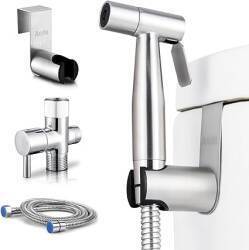
WCs at the Saadian Tombs
Sultan Ahmad al-Mansour and his Saadian Tombs in Marrakech
Sultan Ahmad al-Mansour
was the sixth Sultan of the Saadian dynasty,
ruling 1578–1603 CE.
Historians agree that his reign was the apex of the
Saadian dynasty, which lasted from 1510 to 1659.
He ruled from Marrakech,
one of Morocco's Imperial cities.
He established friendly relations with England,
sending his secretary Abd el-Ouahed ben Messaoud
as ambassador to the Court of Queen Elizabeth I.
He maintained French physicians in his own Court.
His armies annexed oases and surrounding territories
south into the Sahara,
and controlled the trans-Sahara gold trade for several years.
He wrote in 1601 of his desire to colonize the Americas,
settle it with Moroccans,
and wait for the Mahdi or Islamic messiah to appear.
And, as an enlightened man, he issued a fatwa
discouraging the use of tobacco.
One of today's primary attractions in Marrakech
is the Saadian Tombs complex,
a necropolis he built within the royal kasbah or citadel.
Art historians consider it to be the high point of
Moroccan architecture in the period.
A Sultan of a later dynasty walled off the necropolis
in an attempt to largely erase the Saadians from history.
The complex was rediscovered in 1917,
restored, and opened to the public.
Getting There
The kasbah is a large walled district within the southern part of the medina, or walled old city, of Marrakech. A medina is fortified, while a kasbah is an even more strongly fortified citadel within it.
A medina is funky, while a kasbah is rocked.
The initial kasbah and royal palace were built in the northern part of the city, near the Almoravid waterworks and the Ben Youssef mosque and madresa. The following Almohad rulers destroyed many of the Almoravid monuments and built a new kasbah in the south.
Bab Agnaou is a large gate into the newer (late 12th century CE) kasbah. Bab Agnaou was built around 1188–1190 under the direction of the Almohad caliph Abu Yusuf Ya'qub al-Mansur. Bab is Arabic for "gate" or "door".
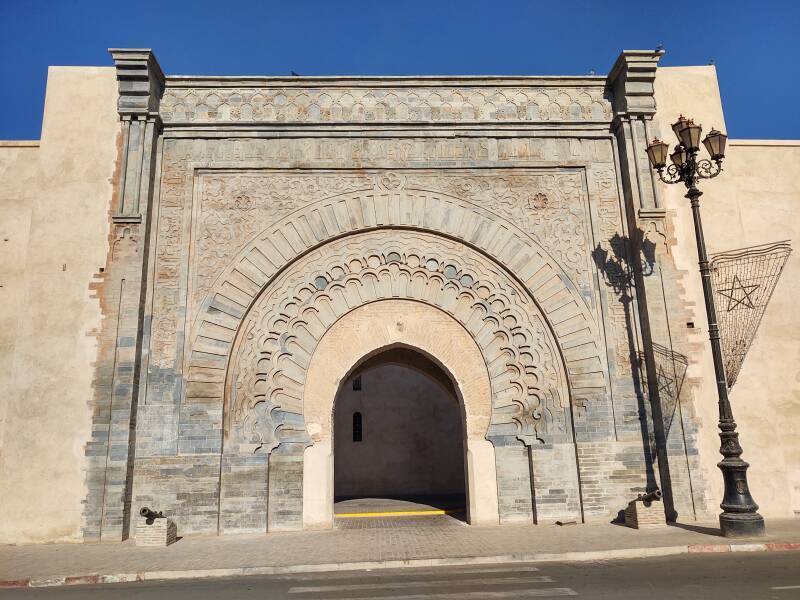
This gate used to be an even more secure bent gate, as you had to turn 90° to the right and then 90° to the left immediately after entering it.
Enter through the gate and proceed through a narrow street to the Kasbah Mosque. Al-Mansour extended an existing burial ground that had been established against the southern wall of the mosque. Buy your ticket and make your way in through a narrow twisting passageway.
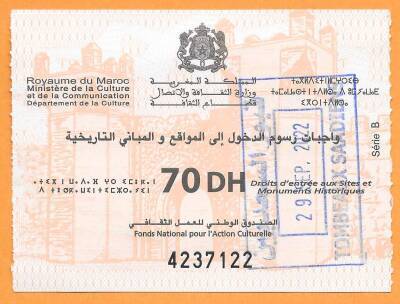
The later sultan Moulay Isma'il was the second ruler of the 'Alawi dynasy, ruling 1672–1727. He destroyed Saadian mosques and plundered Saadian palaces. He sealed the tomb complex off from most of the surrounding buildings. It was used for some burials into 'Alawi times, but after that it was largely ignored.
The French Protectorate controlling Morocco was established in 1912. The French established the Service des Beaux-Arts, Antiquités, et Monuments historiques. In 1917 that organization rediscovered the tomb complex, supposedly by noticing an isolated cluster of structures in aerial photographs.
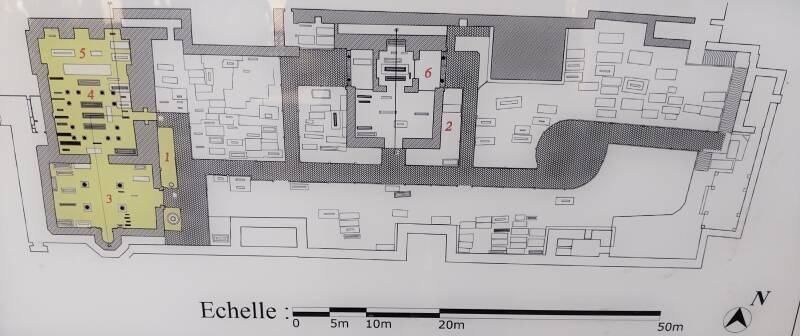
Plan of the Saadian Tombs
Left (1, 3, 4, 5): Western Sanctuary
Center (2, 6): Eastern Sanctuary
3: Mihrab hall
4: Hall of 12 Columns
5: Hall of 3 Niches
6: Dome of Lalla Mas'uda
The entire Eastern Sanctuary is also known as the Domed Tomb of Lalla Mas'uda, who was also known as Mas'uda al-Wizkitiya. She was the wife of Muhammed al-Shaykh, the first Saadian Sultan. There are loggias on the west and east sides of the Eastern Sanctuary.
The loggias have triple arches. A cedar wood canopy at the top rests on pillars covered in carved stucco, which in turn rest on marble columns. Smaller lambrequin arches with elaborate muqurna patterns of lobes and points join the pillars to the walls.
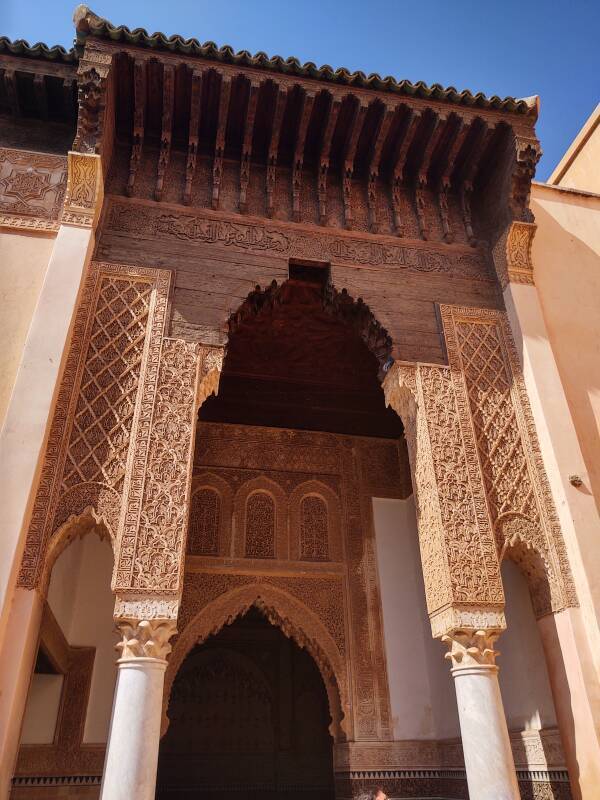
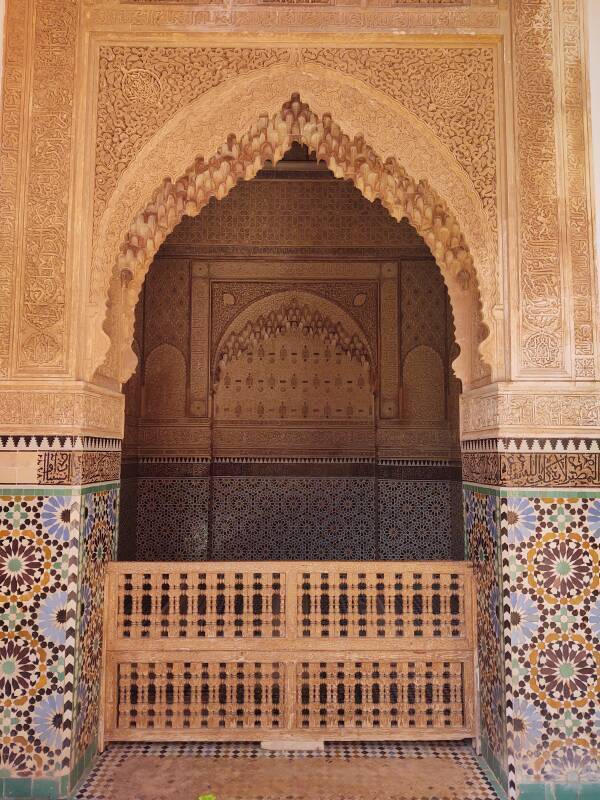
The above archway within the east loggia leads to her tomb.
Not even the ceilings are plain.
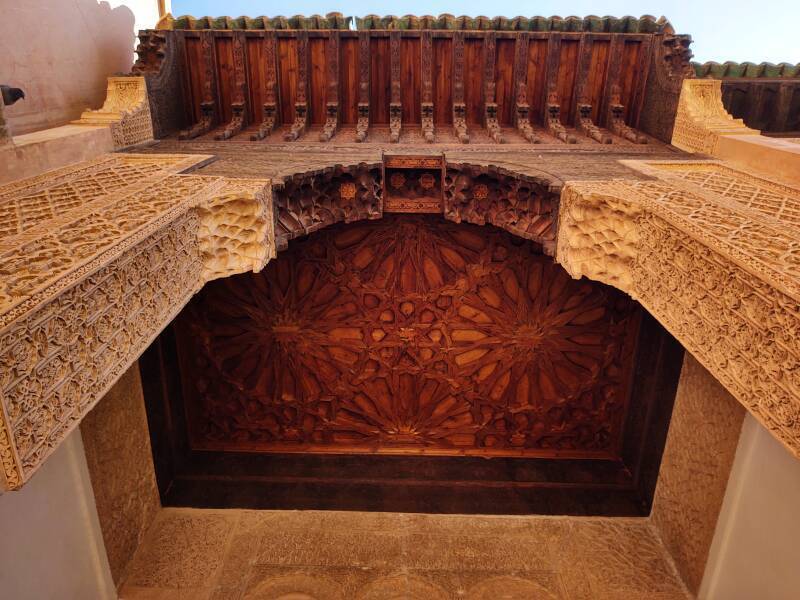
Western Sanctuary — Hall of Twelve Columns
The Hall of Twelve Columns is the most elaborately decorated part of the Saadian Tombs. Ahmad al-Mansour's grave is the one in the center here.
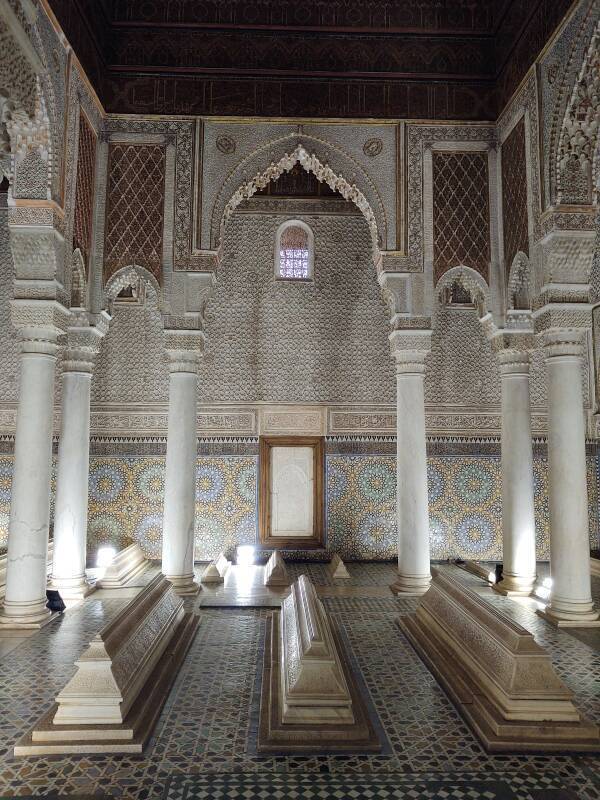
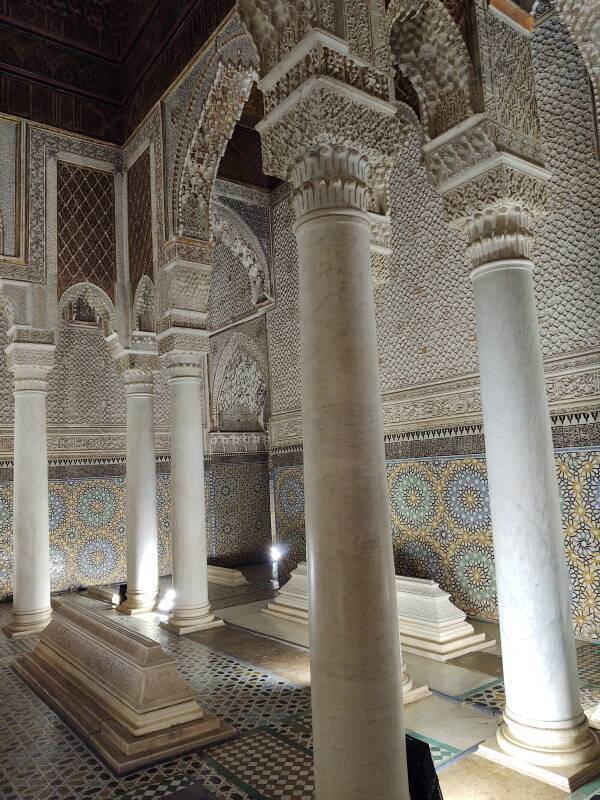
The Hall of Twelve Columns is a square chamber about 10 meters on a side and 12 meters high. Within that square is a smaller square formed by twelve columns of marble in groups of three at the corners.
The columns support muqurna arches.
The walls have zellij tilework in complex patterns up to eye level, then carved stucco above that.
There is one large square ceiling at the center, and eight smaller square and rectangular ceilings around it. All are filled with elaborately carved cedar.
Western Sanctuary — Hall of Three Niches
The Hall of Three Niches is off to your right as you look in. You can see it through an arched door connecting it to the Hall of Twelve Columns. That's one of its three niches at the back here.
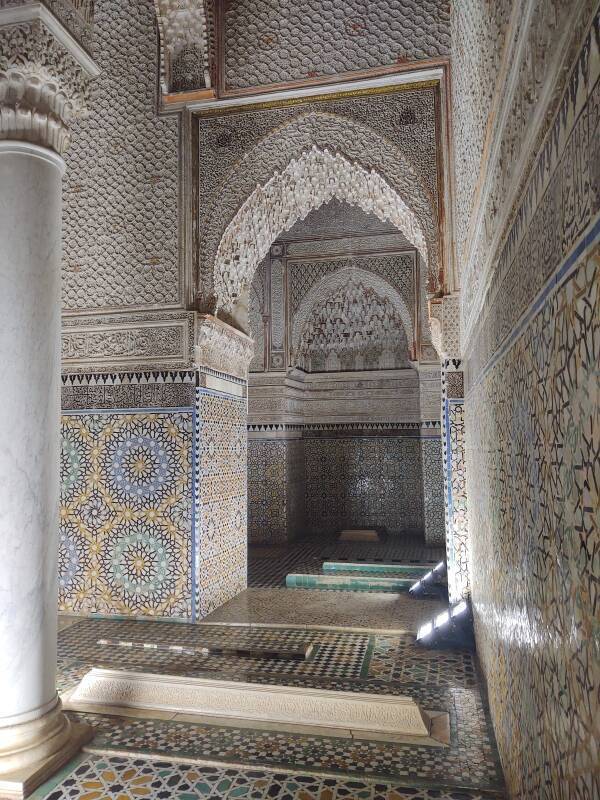
Let's See Today's Modern WCs
The garden areas within the tomb complex are filled with graves of various figures — both earlier and later Imperial rulers, plus some viziers, 170 chancellors and their wives, and several especially trusted Jewish advisors.
And, along the southern wall, you can spot the sign for the modern toilets for visitors.
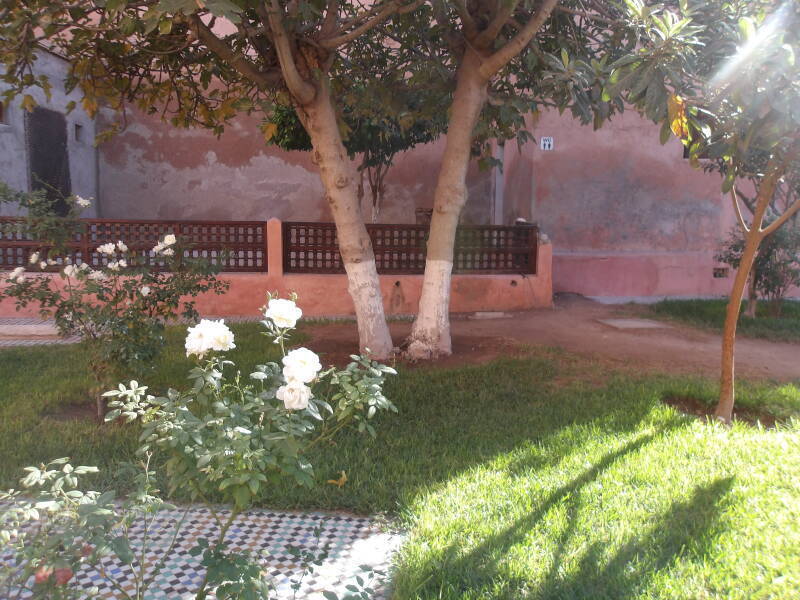
Two identical ones, men on the left and women on the right.
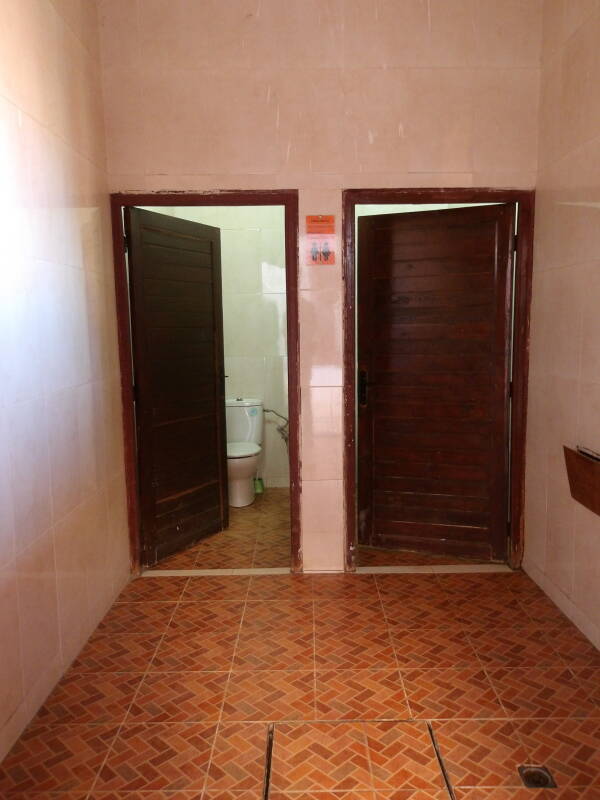
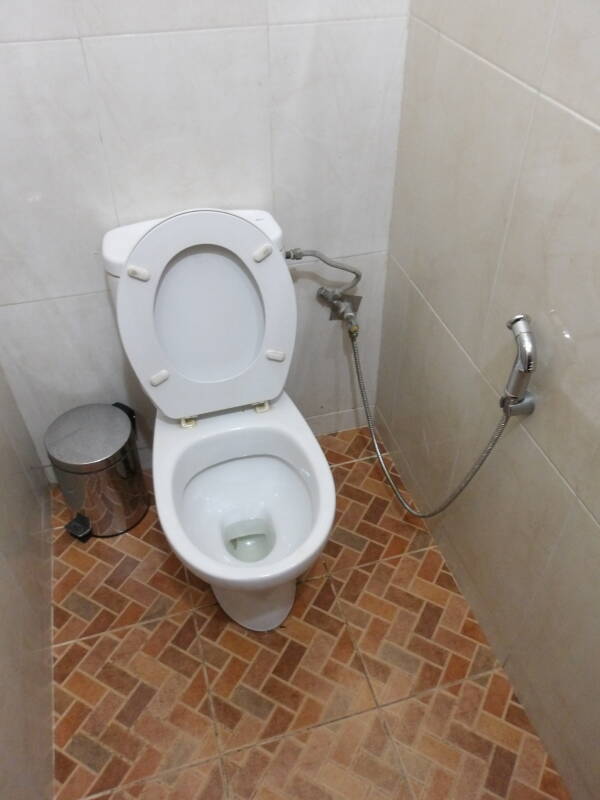
Moroccan toilets can handle reasonable amounts of toilet paper, if your brought your own. But the assumption is that you will be like the locals and prefer the shattaf or handheld sprayer.
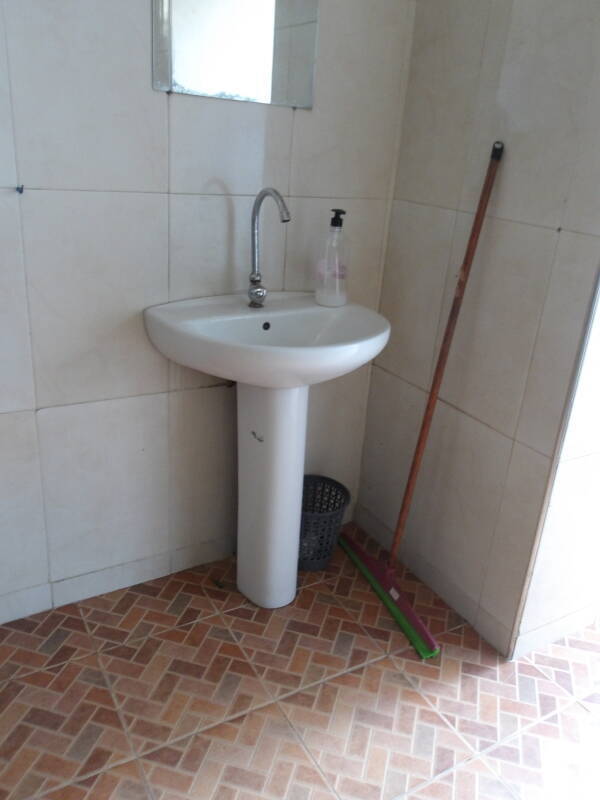
Wash up after using the toilet!

